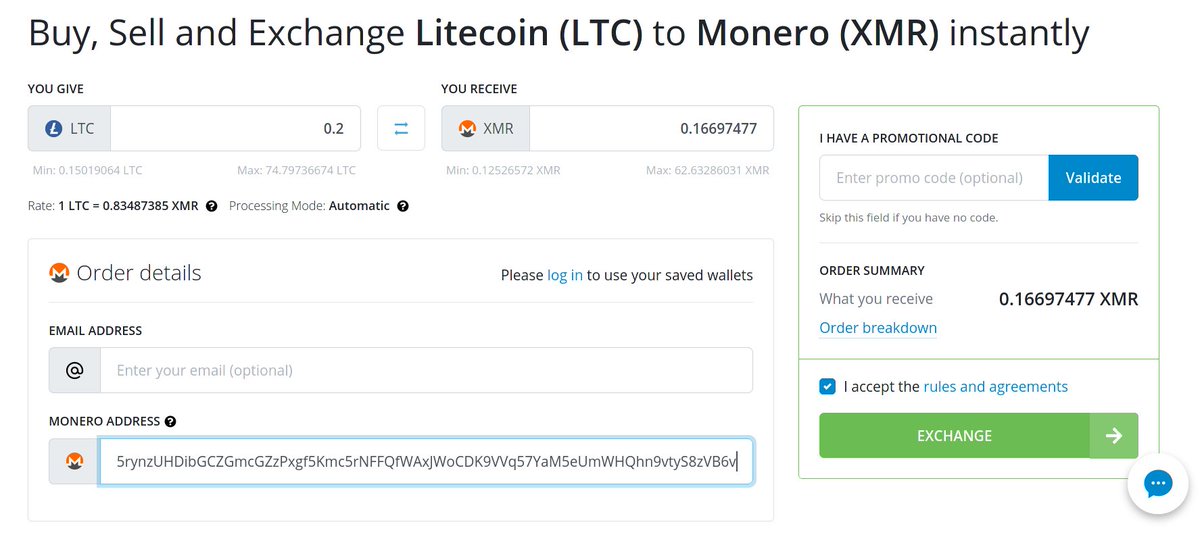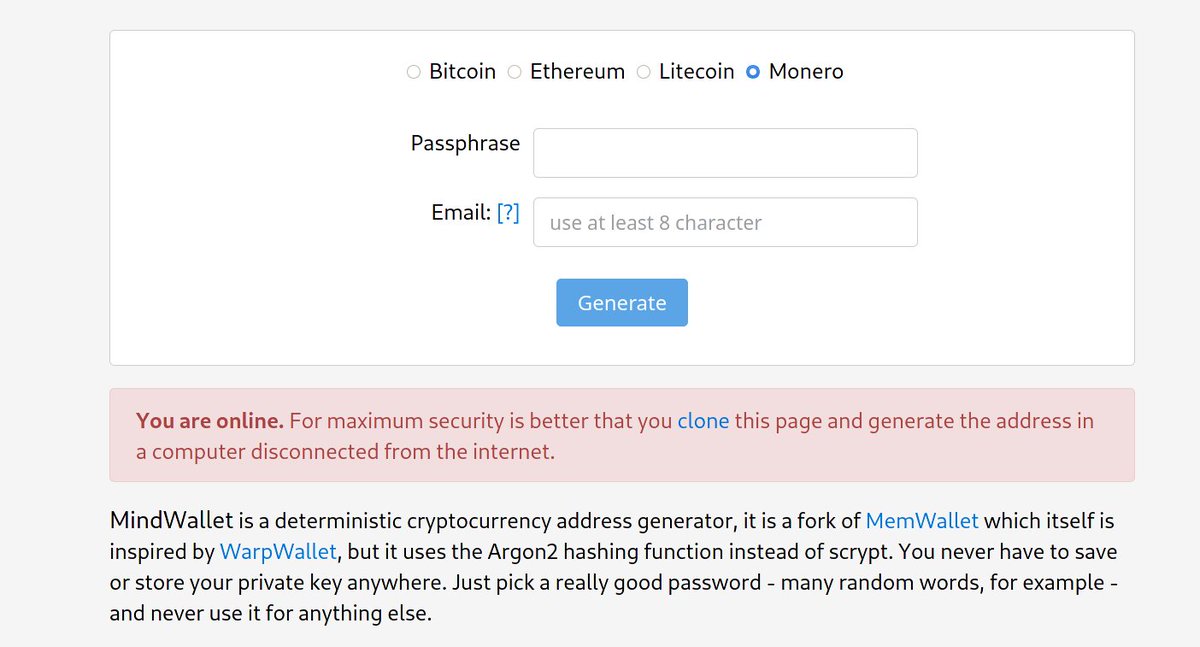
1/ This post is going to break down the @monero backdoor that I've been referencing (that got @fluffypony so riled up he had to make false, defamatory claims about me "exit scamming"; imagine he was red in the face banging his keyboard when he wrote this one) 

2/ To be clear, this post is referring to this Monero proposal: ccs.getmonero.org/proposals/xiph…; which was successfully funded with 181 XMR, currently worth > $40,000.
Here's the relevant GH repo we're going to dissect = github.com/tevador/monero… (linked from the proposal)


Here's the relevant GH repo we're going to dissect = github.com/tevador/monero… (linked from the proposal)

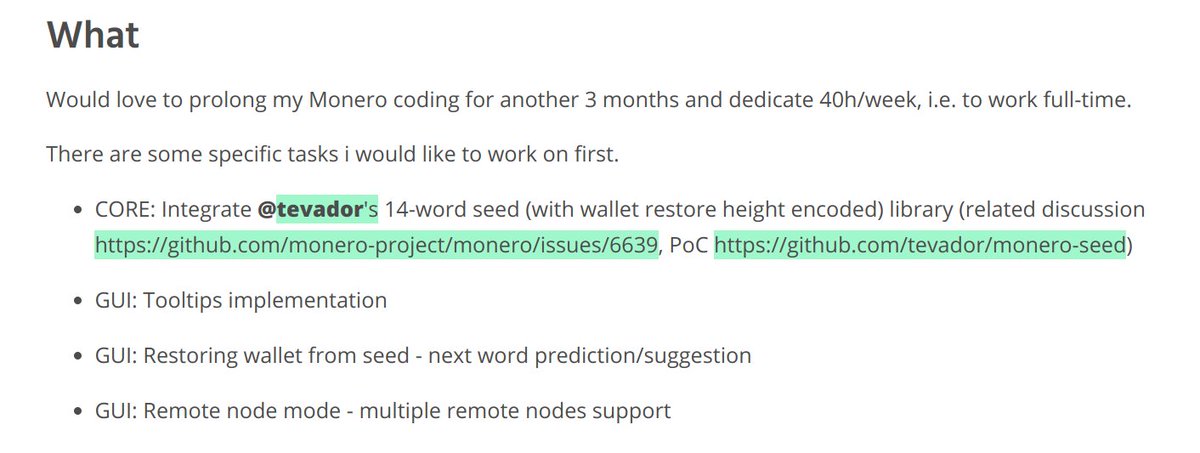

3/ To start, the idea that this wallet repo will save "5 bits reserved" for "future updates", makes zero sense.
The bits he's referring to here are generated from entropy & only exist in an ephemeral, indistinguishable form (how would one select the "5-bits"?)
The bits he's referring to here are generated from entropy & only exist in an ephemeral, indistinguishable form (how would one select the "5-bits"?)

4/ The first picture is from the backdoored wallet app ; the second one is from the actual BIP39 specification (which this guy tried - and failed, to replicate)
bip39 = github.com/bitcoin/bips/b… (ref.)

bip39 = github.com/bitcoin/bips/b… (ref.)


4a/ Let's take a step back and breakdown BIP39 real quick.
First priv/pubkeys.
Bitcoin compressed public + private keys are supposed to be 32-bits each. But the public is 33-bits because its a signed integer (the private key is unsigned).
First priv/pubkeys.
Bitcoin compressed public + private keys are supposed to be 32-bits each. But the public is 33-bits because its a signed integer (the private key is unsigned).

4b/ Every bit = 8 bytes
So 1 byte = 8 bits (2 bytes in hexadecimal)
128 / 32 = 4 bytes / 8 byte hexadecimal ; (take a checksum from each pair)
End up with 4 checksums appended at the end of each.
So 1 byte = 8 bits (2 bytes in hexadecimal)
128 / 32 = 4 bytes / 8 byte hexadecimal ; (take a checksum from each pair)
End up with 4 checksums appended at the end of each.
4c/ That's where the additional '4' comes from in that mnemonic word matrix table
Each checksum = 1 bit (4 bytes) ; 4 checksums = 16 bytes / 32 bytes (hexadecimal)
This is how your classic BTC address gets crafted
From the Bitcoin Wiki = en.bitcoin.it/wiki/Technical…

Each checksum = 1 bit (4 bytes) ; 4 checksums = 16 bytes / 32 bytes (hexadecimal)
This is how your classic BTC address gets crafted
From the Bitcoin Wiki = en.bitcoin.it/wiki/Technical…


4d/ You can see the developer of this repo clearly had no clue what they were doing because they erroneously mention "11 bits" (which isn't stored in each word; every 3 words = 32-bit SHA256 'word')
That # was not chosen arbitrarily in BIP39 specification

That # was not chosen arbitrarily in BIP39 specification
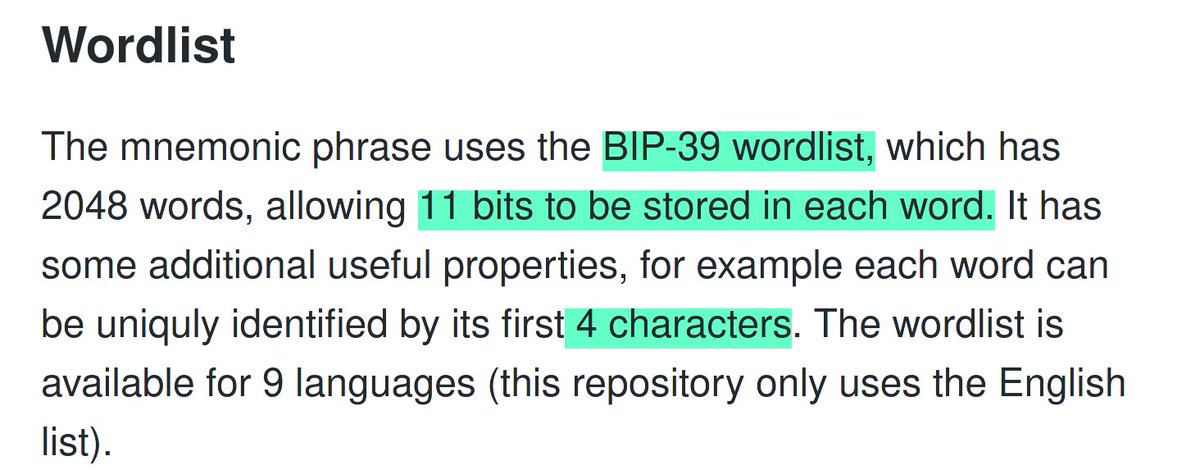

5/ Moving forward, things get questionable at the KDF part.
For some reason they opted for the HMAC-SHA256 construction vs. SHA512 (which is what Bitcoin uses); why use a different, weaker hash signature there?

For some reason they opted for the HMAC-SHA256 construction vs. SHA512 (which is what Bitcoin uses); why use a different, weaker hash signature there?

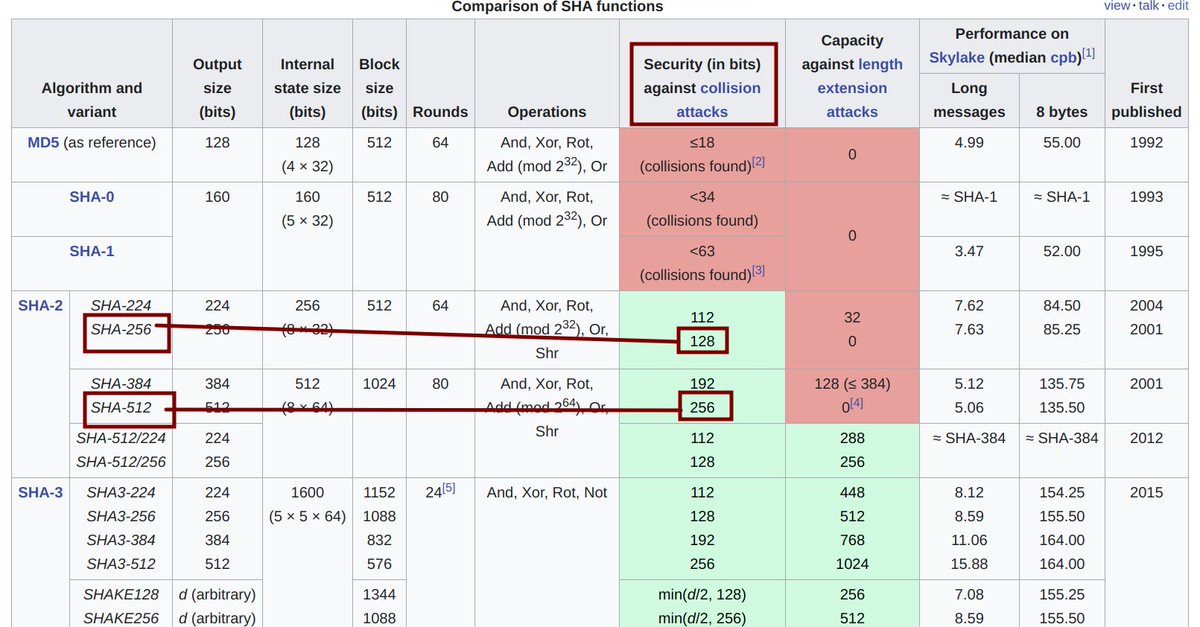
5a/ For the sake of thoroughness, this tweet has a picture capturing an excerpt from 'Mastering Bitcoin' written by @aantonop , where it clearly specifies HMAC-SHA512 





5b/ Then to make matters worse he makes the *completely* false claim that a seed generated with 128-bits of entropy imbues the same security assurances as an elliptic curve algorithm with a 128-bit strength rating.
Those two concepts are *completely* unrelated to one another.
Those two concepts are *completely* unrelated to one another.

6/ At the outset, this swap to SHA256 vs. SHA512 may seem trivial, but it isn't - only due to a quirk in how HMAC works.
Keys longer than the byte size of the input 'word' cause the construction to first 'hash the key' "using H"; resulting in pseudo-collisions

Keys longer than the byte size of the input 'word' cause the construction to first 'hash the key' "using H"; resulting in pseudo-collisions


7/ Here's where that dev shot himself in the foot.
The SHA256 construction has a 64-byte block size [and takes two 32-bit words as input]. Many don't know this, but SHA256 = two separate processes (there's a midstate cache) <-- this laid foundation for ASIC optimizations


The SHA256 construction has a 64-byte block size [and takes two 32-bit words as input]. Many don't know this, but SHA256 = two separate processes (there's a midstate cache) <-- this laid foundation for ASIC optimizations
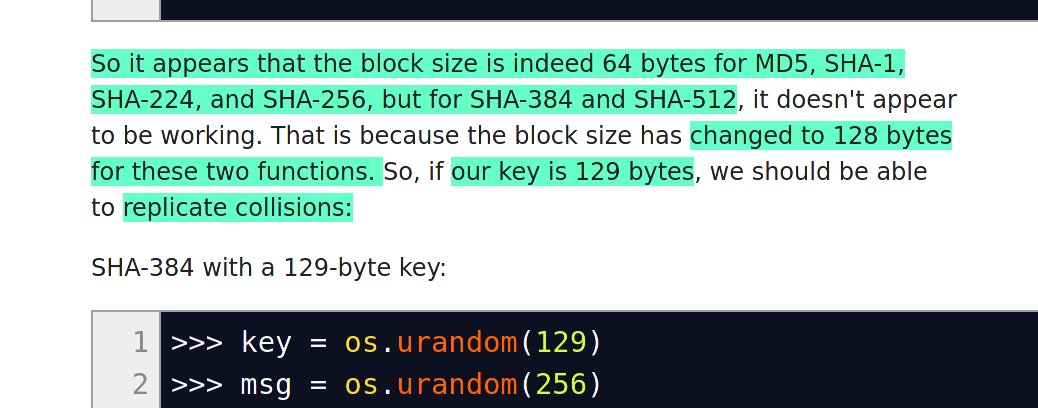


7a/ Remember the bit length that "dev" proffered? They claim to be piping in *154-bits*, which is >128-bit size for the HMAC construction (something this dev stated explicitly themselves)
That means end users *would* find themselves victimized by pseudo-collisions.

That means end users *would* find themselves victimized by pseudo-collisions.


7b/ To back up this claim, I wrote up a brief Python script which you can check out on Repl here = replit.com/@Librechain/Py… 



8/ You can read the rest of the report here = librehash.org/monero-wallet-…
I tore the repo to pieces.
Strongly reconsider *ever* using Monero for anything - whether you need privacy or not.
@fluffypony is clearly a stooge that's in over his head.
I tore the repo to pieces.
Strongly reconsider *ever* using Monero for anything - whether you need privacy or not.
@fluffypony is clearly a stooge that's in over his head.
• • •
Missing some Tweet in this thread? You can try to
force a refresh






